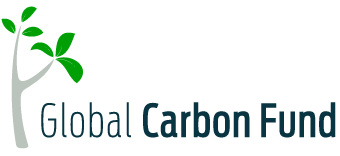U.S. SEC Greenlights First Stock Exchange Focused on Sustainable Investing
The Green Impact Exchange (GIX) is about to make history. It’s set to become the first U.S. stock exchange focused only on companies that care about the environment and long-term sustainability.
The U.S. Securities and Exchange Commission (SEC) has approved GIX to register as a national securities exchange, giving it the green light to begin trading in early 2026. This move comes at a time when sustainable investing faces some challenges.
In recent months, investors have pulled billions of dollars from ESG (Environmental, Social, and Governance) funds. In just one week, nearly $5.7 billion was withdrawn from ESG exchange-traded funds—one of the largest outflows in over a year. Still, the team behind GIX believes demand for green investments will grow over time.
What Is GIX All About?
GIX was founded in 2022 by two former leaders from the New York Stock Exchange (NYSE): Daniel Labovitz, who used to lead regulatory policy at the NYSE, and Charles Dolan, a former Executive Floor Governor. Their goal is to create a place where companies with real sustainability goals can connect with investors who care about the future of the planet.

To be listed on GIX, a company must:
- Publicly commit to long-term sustainability.
- Make clear plans for the short, medium, and long term on how they will run more sustainably.
- Align their business with these sustainability promises.
- Use a recognized sustainability reporting framework.
- Regularly report their progress.
- Involve and communicate with stakeholders in their sustainability journey.
At first, GIX will allow companies to list shares on both GIX and another stock exchange. But in the future, companies may be able to use GIX as their main trading home.
A Green Light in a Tough Time
Even though some ESG funds are seeing investors pull back, other parts of the green economy are growing. Venture capital and private equity firms invested more than $5 billion in climate-tech startups in the U.S. during the first quarter of 2025. That’s a jump of almost 65% compared to last year, based on data from PitchBook.

This shows that while traditional ESG funds may be struggling, there’s still strong interest in new clean technologies. GIX is hoping to tap into that interest by focusing only on companies that are serious about their impact on the environment.
Dan Labovitz, GIX’s co-founder and CEO, said the SEC’s approval is a big step for investors and businesses who want markets that support better environmental choices. He thanked the SEC for supporting a market-led way to help companies raise money in a greener way, saying:
“Today’s approval order is an important step forward for sustainability-minded investors and companies…We are grateful to the SEC for their support of market-driven innovations that will improve capital formation.”
Building a Marketplace for a Cleaner Future
Charles Dolan, the other GIX co-founder and its president, explained why this matters: “Climate risk is business risk. It’s that simple.” In other words, businesses that don’t plan for the effects of climate change could suffer, and so could their investors.
Public exchanges like GIX aim to connect investors who care about sustainability with companies that are actually doing something about it. These are companies making real efforts to cut carbon emissions, use clean energy, and reduce waste.
GIX says it has already talked to hundreds of companies in the past 18 months. Many of these companies operate globally and see sustainability as key to staying competitive.
“We’re not seeing evidence of a slowdown,” said Labovitz. “If anything, we are seeing signs that it will continue to grow.”
A New Kind of Listing With a Vision for a Greener Tomorrow
Unlike traditional stock exchanges that focus mainly on financial performance, GIX will also track how well companies do on their environmental goals. That means investors won’t just look at profits. They’ll also consider whether a company is meeting its promises to reduce pollution, use clean energy, and treat people fairly.
To stay listed, companies must meet the rules identified earlier, e.g., setting real sustainability goals and taking steps to meet them. These rules mean companies can’t just say they care about the environment—they have to prove it.
GIX is still working with FINRA, a financial industry regulator, to make sure everything is ready for trading. When it launches in early 2026, it hopes to attract both well-known public companies and new startups that put sustainability first.
Even with the ups and downs of ESG investing, GIX is betting that sustainability will remain a key issue for investors. Climate change, resource use, and social impact are not going away. Companies that plan for these challenges—and show they’re taking action—may become the leaders of tomorrow.
By creating a marketplace just for them, GIX wants to speed up this shift and give investors a better way to support a greener, more responsible economy.
The post U.S. SEC Greenlights First Stock Exchange Focused on Sustainable Investing appeared first on Carbon Credits.



































